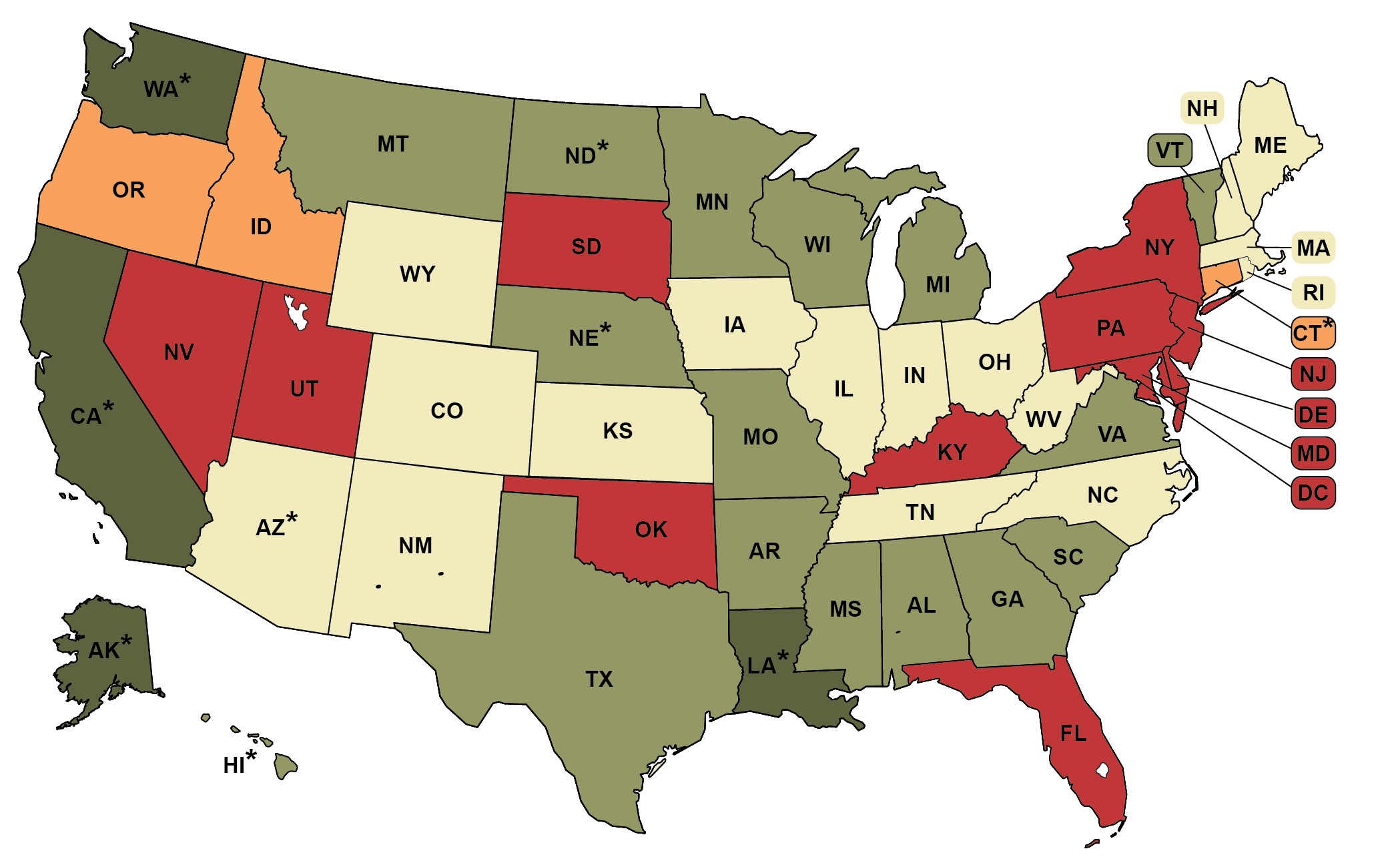State primary elections determine the candidates that will be on the ballot for the general election. States primary election systems vary widely, with some elections only open to voters registered with a particular party, while other states allow non-affiliated voters to participate as well. While most state primary systems are partisan, a few states have adopted nonpartisan primaries, in which voters cast a ballot in a single primary with all candidates on the same ballot. Nonpartisan primary states receive the highest score on our map as evidence suggests these systems increase voter turnout as well as produce more competitive and less polarized elections. Closed primary states receive the lowest score as these systems completely exclude millions of Independent and unaffiliated voters from participating in primary elections. Note: This map tracks systems used for state level and congressional primaries. Some states use different rules for presidential primaries, which are indicated with asterisks on the map. See the citations for additional details.

-
State primary system is nonpartisan (everyone votes in a single primary)
(4 states)
-
State primary system is open to Independents (all voters can choose which primary to vote in without registering with a party)
(16 states)
-
State primary system is semi-open (only independent voters can choose which primary to vote in)
(16 states)
-
State primary system is semi-closed (state law allows political parties to choose which voters can participate in primaries)
(3 states)
-
State primary system is closed (voters must be registered with a political party to participate in that primary)
(11 states + D.C.)
Note: This map tracks systems used for state-level and congressional primaries. Some states use different rules for presidential primaries, which are indicated with asterisks on the map. See the citations for additional details.
*State uses different rules for presidential primaries. Please click "Citations" beneath the map legend for more information.
Recommended citation: Movement Advancement Project. "Partisanship of State Primary Election Systems." https://www.mapresearch.org/democracy-maps/state_primary_systems. Accessed [day of access]
Breakdown by Population
*Note: These percentages reflect the voting-eligible population, as reported by the United States Election Project.
15 % of voting-eligible population lives in states that primary system is nonpartisan
30 % of voting-eligible population lives in states that primary system is open to Independents
25 % of voting-eligible population lives in states that primary system is semi-open
3 % of voting-eligible population lives in states that primary system is semi-closed
27 % of voting-eligible population lives in states that primary system is completely closed to Independents


